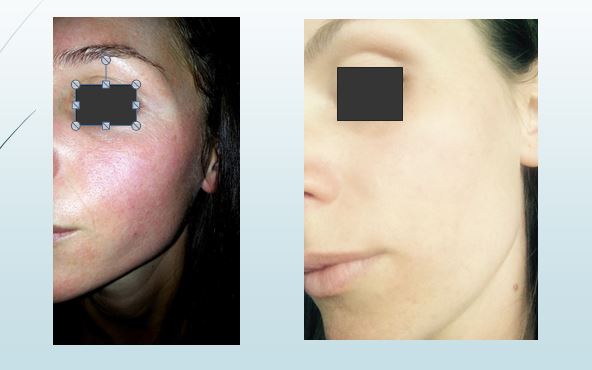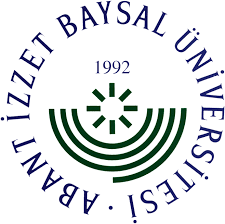Day 2 :
Keynote Forum
Edgar Serfling
University of Würzburg, Germany
Keynote: NFATC1 enhances imiquimod-induced skin inflammation by inhibiting IL-10 expression in B lymphocytes
Time : 09:30-10:15
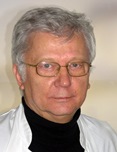
Biography:
Edgar Serfling has been graduated from the University of Halle/Wittenberg as PhD and of University of Wuerzburg (Habilitation), with the specialties in Biochemistry and Molecular Pathology. Later on, he obtained his post-graduation from University of Wuerzburg and then started working at the Institutes of Virology and Immunobiology, and of Pathology where he has continued his research. Presently he has been working at the Institute of Pathology, Wuerzburg, Germany.
Abstract:
Psoriasis is a chronic inflammatory skin disease that affects 2-3% of population in Western countries. Since B cells are hardly detected in psoriatic skin, until recently their role in psoriasis remained un-regarded. We show here that the repetitive epicutaneous application of Aldara®, a cream containing the toll-like reptor (TLR) 7-agonist imiquimod (IMQ), to mice induces skin inflammation that exhibits many aspects of early stages of human psoriasis. Mice depleted of B cells or bearing IL-10-deficient B cells show an even more fulminant inflammation upon IMQ exposure indicating that IL-10 synthesized in B cells controls skin inflammation. In contrast, ablation of NFATc1 in B cells results in depressed IMQ-induced skin inflammation. Aldara® cream application to the skin leads to the differentiation of splenic B cells to plasmablasts and IL-10-producing B cells. In vitro, IMQ induces the proliferation and IL-10 expression of splenic B cells. The induction of IL-10 RNA by IMQ can be blocked by a-IgM-mediated B cell receptor signals that, on the other hand, induce NFATc1. By binding to HDAC1, NFATc1 suppresses IL-10 expression, which, otherwise, dampens the production of inflammatory cytokines by T cells, including TNFa and IL-17. These data indicate a close link between NFATc1 and IL-10 expression in B cells during IMQ-mediated skin inflammation and suggest that the suppression of NFATc1 activity might be of benefit to treat human psoriasis and, possibly, other autoimmune diseases as well.
Keynote Forum
Pedro Morouço
Polytechnic Institute of Leiria, Portugal
Keynote: Biofabrication for cartilage regeneration: Engineering biomaterials and printing processes
Time : 10:15-11:00

Biography:
Pedro Morouço is a very enthusiastic and provoking early-career researcher. Currently he is the Head of R&D Biofabrication Group at the Centre for Rapid and Sustainable Product Development – Polytechnic Institute of Leiria, Portugal. He is the Principal Investigator of “2bio4cartilage – Integrated intervention program for prevention and treatment of cartilage lesions”, and his research activity focuses, mostly, on products and processes engineering, aiming to bringing the gap between the lab and in vivo applications. In the last years, he has been invited to collaborate in several national and international projects, providing a significant income for the Biofabrication Group (currently has 8 grant-holders). Despite his young age, he has co-edited books, authored, co-authored more than 150 scientific works, member of the scientific committees in various conferences, member of the advisory board on TERM for Cambridge Scholars Publishing, editorial member in various journals, and keynote speaker for Stem Cell and Regenerative Medicine 2016(Manchester, UK) and Tissue Engineering and Regenerative Medicine 2016 (Berlin) & 2017 (Barcelona).
Abstract:
Pedro Morouço is a very enthusiastic and provoking early-career researcher. Currently he is the Head of R&D Biofabrication Group at the Centre for Rapid and Sustainable Product Development – Polytechnic Institute of Leiria, Portugal. He is the Principal Investigator of “2bio4cartilage – Integrated intervention program for prevention and treatment of cartilage lesions”, and his research activity focuses, mostly, on products and processes engineering, aiming to bringing the gap between the lab and in vivo applications. In the last years, he has been invited to collaborate in several national and international projects, providing a significant income for the Biofabrication Group (currently has 8 grant-holders). Despite his young age, he has co-edited books, authored, co-authored more than 150 scientific works, member of the scientific committees in various conferences, member of the advisory board on TERM for Cambridge Scholars Publishing, editorial member in various journals, and keynote speaker for Stem Cell and Regenerative Medicine 2016(Manchester, UK) and Tissue Engineering and Regenerative Medicine 2016 (Berlin) & 2017 (Barcelona).
- Stemcells and Tissue Regeneration | Tissue Science and Regenerative Medicine | Skin Infections and Disorders | Burns and Advanced Wound Care | Skin and Cosmetic Dermatology
Location: Spessart
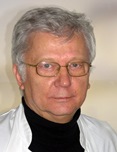
Chair
Edgar Serfling
University of Wurzburg , Germany

Co-Chair
Pedro Morouco
Polytechnic Institute of Leiria,Portugal
Session Introduction
Krishna Deb Barman
Maulana Azad Medical College, India
Title: A comparative evaluation of microneedling alone versus combined subcision and microneedling in post acne scars

Biography:
Krishna Debbarman has completed his MD at the age of 27 years from All India Institute of Medical Sciences, New Delhi. He is the faculty of Maulana Azad Medical College, Delhi University, Delhi, India. He has published more than 20 papers in reputed journals and has been reviewer of many reputed journals.
Abstract:
Aim: Various surgical procedures are available for management of acne scars and they can be combined with variable success. As micro needling targets superficial boxcar scars while subcision targets primarily rolling scars, it can be assumed that a combination of the two would give better results. Since no data available about the efficacy of micro needling alone vs microneedling with subcision in management of post acne scarring, this study was performed to compare the efficacy of both the procedures.
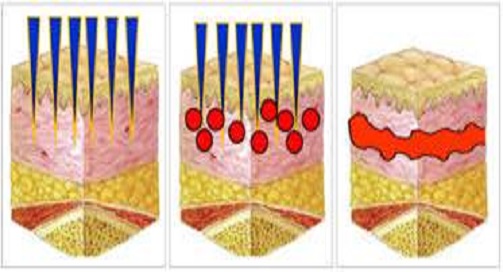
Material and Methods: A total of 40 patients with post acne scars were included in the study and were alternately recruited into two groups; Group-A (Microneedling) and Group-B (Combined Microneedling and Subcision) and the procedures were performed under aseptic precaution. All cases were followed on monthly intervals. The improvement was evaluated on VAS by both physician and patient accordingly. Appropriate statistics were used to analyze the results.
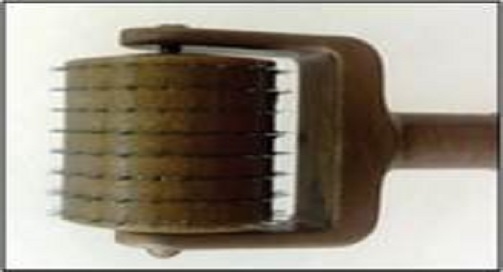
Results: Out of 40 patients age ranging from 18-44 years with a mean of 25.80 years, 37 patients completed the study. Majority (60%) were in the age of 20-30 years and the ratio (M:F) was equal. The mean number of rolling acne scars in Group-A decreased by 8.6% as compared to 27.9% in Group-B. There was a significant statistical difference. The mean number of icepick scars in Group-A decreased by 4.9% as compared to 18.25% in Group-B. The mean number of boxcar scars in Group-A decreased by 2.91% as compared to 18.32% in Group-B and a statistical significant difference was achieved between baseline and 6th visit (p-.048). The mean number of total acne scars decreased by 4.83% and 19.65% respectively in group A & B over a 6 months periods. However, there was no significant statistical difference. No significant adverse effects were noted in any of the patients, except postinflammatory hyperpigmentation in one patient.
The findings indicate that both microneedling and combination of microneedling with subcision produce good results. But combination gives faster and superior results when compared to microneedling alone in treating rolling and boxcar scars.
Alper Tugral
Abant Izzet Baysal University, Turkey
Title: Skin care and advanced skin changes in lower limb lymphedema

Biography:
Alper TuÄŸral has graduated as a Physiotherapist from Hacettepe University, Faculty of Health Sciences, Physical Therapy and Rehabilitation. He started working at Abant Izzet Baysal University (AIBU) as a research assistant in 2015. In the same year, he was certified by FoldiSchule, Germany. Later he obtained his master’s degree from AIBU Institute of Health Sciences at 2016 with the subjects of lower limb lymphedema. He is a PhD student now and continues his researches at the same Institute. His working specialties are on breast cancer, breast and gynecologic cancer-related lymphedema, chronic venous insufficieny, wound care, exercise-based intervention in oncologic rehabilitation. Presently he has been working at AIBU in Bolu.
Abstract:
Normal skin structure shows a major affection in lower limb lymphedema along with it is a structure complex carries primary importance in protective barrier function and integration natural moisture balance. Integration natural moisture balance of skin should be placed primarily in the treatment plan against the corruption of skin integrity, injuries, infections and as the most importantly to recurrences. In lower limb lymphedema, skin is more fragile and vulnerable to injuries due to prolonged and increased interstitial pressure along with increased diffusion distance and ineffective nourishment. Adipose tissue and fibrotic changes in basal are reported as the underlying reason, therefore these changes could cause advanced skin changes. In lower limb lymphedema, erysipelas infection which might be experienced by patients due to corrupted immune function and inadequate barrier function of skin was reported as 29% in chronic edema. Above 25% of this population, hospitalization was reported as a requirement1. According to the National Health Service (NHS), 96 million £ health expense and 7.1 days hospitalization in average was reported for erysipelas infection2. Researchers reported that stabilization should be integrated with broad range antibiotics along with the integration and continuity to complex decongestive. It is also reported that this approach is beneficial for reducing infection attacks and damage of lymphatics because of infection3. In addition, hyperkeratosis, papillomatosis, lymph fistule, fungal infections, folliculitis, ulcerations, and skin folds which are frequently encountered in lower limb lymphedema are critical points should urge upon in the treatment of lymphedema, especially in skin care.
Ylfete A Shatri - Muçaj
University Clinical Center of Kosova , Kosova
Title: Therapeutic and preventive local treatment with magisterial preparations: Loregen sun day and previta gen

Biography:
Ylfete A Shatri – Muçaj is a dermatovenerology and clinical pharmacology specialist. For specialization of clinical pharmacology is one of the first generations for basic specialization in this field in Balkans. She finished post-graduation and specialization studies in the University of Novi Sad. Currently, she works in UCC in Prishtina from 1981; as a specialist of clinical pharmacology she has treated for 4 years patients with chemotherapy near Internal Clinic – Department of Hematology in UCC. She led for many years the laboratory for magisterial preparations in the Center Pharmacy and Dermatovenerology Clinic near CUU in Prishtina. She worked for some years in the Institute of Biochemistry near Diagnostic Center of CUU. Since 2001 she is working as a Clinical Dermatovenerologist and Pharmacologist in KDV and now leads Dermatological polyclinic and laboratory for magisterial preparations for several skin diseases and and aesthetic issues by which she treats patients in the polyclinic “GENTIANA GreLorGen”. She participated in many conferences and congresses in region and Europe with several scientific works in the field of clinical Dermatology, Oncology and Pharmacology and also as a lecturer of chemotherapy in the National Congress of Oncologists in Prishtina. She is a member of EADV and Kosovo Association of Dermatovenerologists and Oncologists.
Abstract:
Skin changes in the surface of the whole body are extremely problematic for both male and female patients, but the most problematic and complex region is the face (because of its exposure in different factors).
Therefore, from my personal experience, I saw it necessary and reasonable to research and compile a very complex prescription, such as personal magistral preparations: Loregen Sun Day and Previta Gen.
These creams, contain a combination of moisturizing, epithelizing, astringent, revitalizing, vitamins (Vit.C, A, D, E), additional adjuvants, flavoring and cream base for magisterial preparation.
As for active substance, both of the creams contain Antipirin (Phenazone; Antipyrin; Analgesine; - C11H12N2O 188.23g/mol) 20% and 10%, which thought its mechanism of action as inhibitor of prostaglandins, acts as an anti-inflammatory and at the same time serves as an astringents without leaving the skin to become more rude and hyperpigmentated.
In my research, there are treated 334 patients of different ages from both sexes :( of them 203 female or 60.77% and 131 male or 39.22%).
These numbers of patients, depending on the changes of the skin of the faces are divided in three groups:
1. Group one (I-st) with hyperpigmentation changes from different etiology.
2. Group two (II-nd) with erythematosus changes, LED, Dermatitis, seborrhoica, ciakatrices post acne.
3. Group three (III-rd) with Actenic Keratosis, Senil Keratosis, Verruacae et Keratoais seborrohica
Conclusions: The use of an automated PRO platform for mental health screening enables a clinician to identify patients at risk that may have otherwise gone unidentified. Our automated platform screened more unique patients than a manual process in the same time frame. The implementation of the automated process is implemented in just under 70% of our total health system’s appointments. By implementing automated PROs, we hope to identify our total population of patients at risk for mental health conditions.

Biography:
Shahryar Eghtesadi received Bachelor degree in Nutrition Science and Food Chemistry 1975, from Shahid Beheshti University of Medical Sciences, Tehran; MSPH degree in Nutrition, 1977, from Tehran University of Medical Sciences, Tehran and PhD from University of California at Davis(UCD), USA, in Nutrition (1985). He served as Visiting Scientist in USDA Human Nutrition Research Center on Aging (HNRCA), Boston, USA (1994-1995); full professor of Tabriz, Iran and Tehran Universities of Medical Sciences and currently serves as Professor of Azad University, Science & Research Branch. He was the chairs of Departments of Nutrition and Biochemistry, Biochemistry & Clinical Nutrition, Public Health Nutrition and Nutrition in aforementioned Universities. Also Served as Associate Dean and Dean of School of Public Health & Nutrition and School of Public Health of Tabriz and Iran Universities of Medical Sciences respectively. He was selected as distinguished professor and Scientist. For long and extended period of time, experienced teaching various courses in nutrition in undergraduate, graduate and postgraduate and international Bureau programs and directed many projects and dissertation of MS and PhD programs and Published numerous peer reviewed articles in journals and also edited several books and finally served as Principal Investigator of World Bank Project for Capacity Building in Nutrition in Iran.
Abstract:
Sepsis is one of the major causes of death in intensive care units. Oxidative stress and hyper-inflammation has been shown to be major cause of mortality and morbidity in septic cases. Pomegranate is a fruit which is considered for its antioxidant and anti-inflammatory properties. The aim of this study was to evaluate the effect of POMx, a standard pomegranate extract, on mortality and peritoneal bacterial load in cecal ligation and perforation (CLP) model of sepsis in rats. Male wistar rats were divided into four groups: sham; CLP; prevention [consumed POMx (250mg of polyphenols/kg/day) for 4 weeks and subjected to CLP]; treatment [subjected to CLP and then received a single drink of POMx (250mg of polyphenols/kg)]. Sepsis was induced by CLP surgery. Ten day survival rate of all groups (subdivided into with and without antibiotics subgroups) were recorded. Peritoneal bacterial load of animal were also assessed.Data were analysed using log-rank and Kruskal-Wallis tests. There were no significant differences in survival rates of CLP, prevention and treatment groups, in subgroups without antibiotics. However, in subgroups with antibiotics, the prevention group had significantly lower survival rate than sham group (p<0.05). Conversely, the bacterial load of prevention and treatment group were significantly higher than sham group (p<0.01).In conclusion our study demonstrated that pomegranate extract could increase mortality rate via increasing peritoneal cavity bacterial load, in CLP model of sepsis. More studies to assess mechanisms of this effect are warranted.
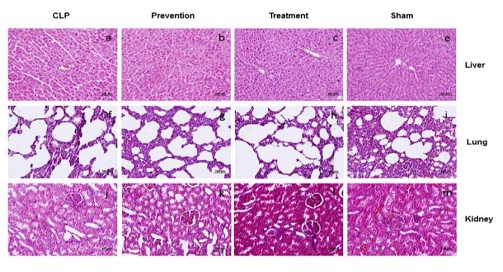

YeÅŸim Bakar
Abant Izzet Baysal University,Turkey
Title: Complex decongestive physiotherapy in venous leg ulcers

Biography:
Yesim BAKAR graduated as a Physiotherapist from Hacettepe University, Faculty of Health Sciences, Physical Therapy and Rehabilitation. She started working at Hacettepe University (HU) as a research assistant in 1997. In 2001 she was certified as Lymphedema Therapist by Foldischule, Germany. She obtained her master’s degree at 2000 and Ph.D degree at 2005 from HU Institute with the subjects of breast cancer-related lymphedema. She has been working as Professor at Abant Izzet Baysal University School of Physical Therapy and Rehabilitation since 2006. Her working specialties are on breast and gynecologic cancer-related lymphedema, chronic venous insufficiency, wound care.
Abstract:
In Europe, venous leg ulcers are the most common cause of chronic wounds. Chronic venous insufficiency is the most important pathophysiological factor in patients with chronic leg ulcers. Not only compression therapy represents the basis of all other therapeutic strategies for venous leg ulcers but also it is the most important component of Complex Decongestive Physiotherapy (CDP). CDP has two phases. Phase 1 is called as decongestion phase and consists of manual lymphatic drainage, skin care, compression bandages, and exercise. In the decongestion phase, the primary goal is edema reduction, improvement of microcirculation and healing of the venous ulcer. In this phase, compression bandages have to be changed daily. Optimal compression brings a decrease in wound exudate as well as in lower limb edema reduction. Phase two of CDP is the maintenance phase and it consists of manual lymphatic drainage, skin care, compression stockings, and exercise. In this phase, edema reduction has been initiated, and venous leg ulcers have frequently transitioned into a progressive healing process. The goal is the prevention of aggravation of edema and recurrences.
There are currently wide varieties of compression materials available. While especially short- stretch bandages should be used in the decongestion phase, compression stockings are recommended for the subsequent maintenance phase. Compression therapy plays a crucial role in the treatment of patients with venous leg ulcers. Optimal compression therapy in combination with exercise is the basis for successful treatment.
In recent years, Complex Decongestive Physiotherapy become available. This paper presents about Complex Decongestive Physiotherapy and the basic principles of compression therapy in patients with venous leg ulcers.
Yuzhi Jiang
Shanghai Burns Institue, China
Title: The different change of structure of dermal tissues during injury and repair

Biography:
Yuzhi Jiang graduated from the Second Military Medical University as Medical Doctor, with the specialties including Plastic surgery, Microsurgery. Then he started working at Shanghai burns institute, Ruijin Hosptial, Shanghai Jiao Tong University School of Medicine where he has continued his research.
Abstract:
The skin lines outside of human being and is the largest organ in the human being. When it is injured, it will affect the quality of human life, such as decreased self-esteem and poor self-perception, which are not beneficial for the physical and psychiatric health of human being. Currently, the problems are still not resolved. Therefore, it is imperative to find the ideal ways to clarify the mechanism. Clinic works and currently researches implicated the integrity and continuity of dermal tissues plays an important role in the wound healing. Researchers have known the difference between normal tissues and wound healed tissue, however, these information are based on the two-dimensional structure and not complete. A novel technique, phase-contrast micro-tomography with synchrotron radiation (PCTSR), showed that the normal tissue was consistently characterized by oval-shaped units oriented in a specific way on the micrometer scale, which was not observed in scar tissues. In addition, the previous study also showed that the non-wound skin from diabetes was different from the health human being and indicative of the chronic foot ulcer. In order to further explore the changes of the structure of skin, we tried to apply for the small angle X-ray scattering (SAXS) to observe the skin after wound healed.The results showed that there is difference between the normal tissue and abnormal tissue, there is even difference between the normal collagen fiber and fibers in different degree of burns, the diabetic. The results will be beneficial for skin tissue engineering, and wound regeneration.






